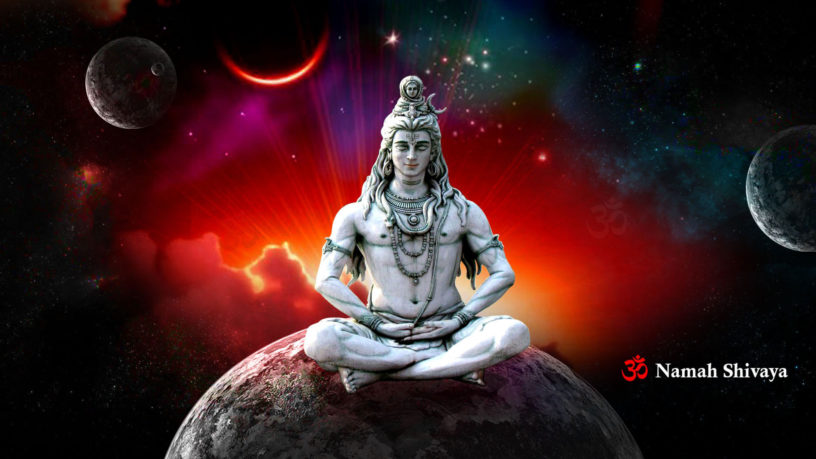Bhagavan Shankar was distressed after Sati Devi immersed herself in flames. He withdrew from the world and went into meditation. As He was no longer paying attention to the world, a demon, Taarka, started to wreak havoc everywhere. He even attacked the holy ones, who went to Bhagavan Vishnu for a solution. They were informed that the demon had prayed for a special boon that he could only be destroyed by the son of Shiva, as he knew that Shivaji had no son. They then appealed to the Divine Mother so that She would manifest Herself as the wife of Lord Shiva and create a son with Him.
It is said that, eventually, a radiant light appeared, and it took the form of a very beautiful Devi. She agreed to manifest Herself in the house of Himalaya as Gauri, marry Lord Shiva and produce a son. Himalaya was worried about how to prepare to host the Devi. That conversation between Himalaya and Devi Maa is located in the Devi Gita, wherein they also deal with the yoga of devotion:
Himalaya said, “O Devi, please describe to me your bhakti yoga (union with the Divine through the pathway of devotion) by which ordinary men, who have no dispassion, can get the knowledge of Brahm easily.”
Devi replied, “Listen, O Chief of Mountains, Himalaya, there are three pathways, widely known, leading to final liberation (moksha). These pathways are: karma yoga (union with the Divine through action), gyaan yoga (union with the Divine through knowledge) and bhakti yoga (the path of devotion). Of these three, bhakti yoga is the easiest in all respects. People can practise it without any suffering to the body. It can bring the mind to a perfect concentration.”
“This bhakti or devotion is of three kinds, just as the gunas (qualities) are three. His worship is tamasic who worships me to pain others, being filled with vanity, jealousy or anger.” (This level of praying is not recommended.)
“That bhakti is rajasic when one worships Me for one’s own welfare and does not intend harm on anyone else. That person has some desire, and thinking himself or herself differently from Me, worships Me with greatest devotion.” (This is the point at which most people start.)
“Bhakti is sattvic when one worships Me to purify sins and offers to Me the result of all karmas, although thinking that jiva (the individual soul) and the Divine are separate, and knowing that this action is authorised by the scriptures, the Vedas, and therefore must be observed.” (A sin occurs whenever you take an action against yourself. The results of those actions are stored deep within your consciousness.)
Devi gives further information: “This sattvic bhakti is different from paraabhakti or supreme devotion (highest unselfish love), as the sattvic worshippers still think I am separate from them. One who hears my glories and recites my name and whose mind dwells always like an incessant flow in Me, who is the receptacle of all auspicious qualities, that person is practising paraabhakti.” (The highest level of devotion is to experience the non-duality of the Divine Self.)
“A person who practises paraabhakti has not the least trace of any desire whatsoever to get the fruits of his karma. He does not want the four forms of liberation, or any other form of liberation. He becomes filled with devotion to me alone, worships me only, knows nothing higher than to serve me and he does not even want final liberation.”
We all suffer from the perception that we are limited and separate from each other and from God; this is the state of duality and plurality. When we practise yoga, starting with sattvic bhakti and developing spiritually towards paraabhakti, it is the simplest and surest way to the Divine. Then we know that we are not this limited individual, and we make actual progress on the spiritual path.
Pt. Dr. Umesh Persad, Spiritual Leader, Gyaan Deepak Kirtan Mandali (from a Sunday morning service)



